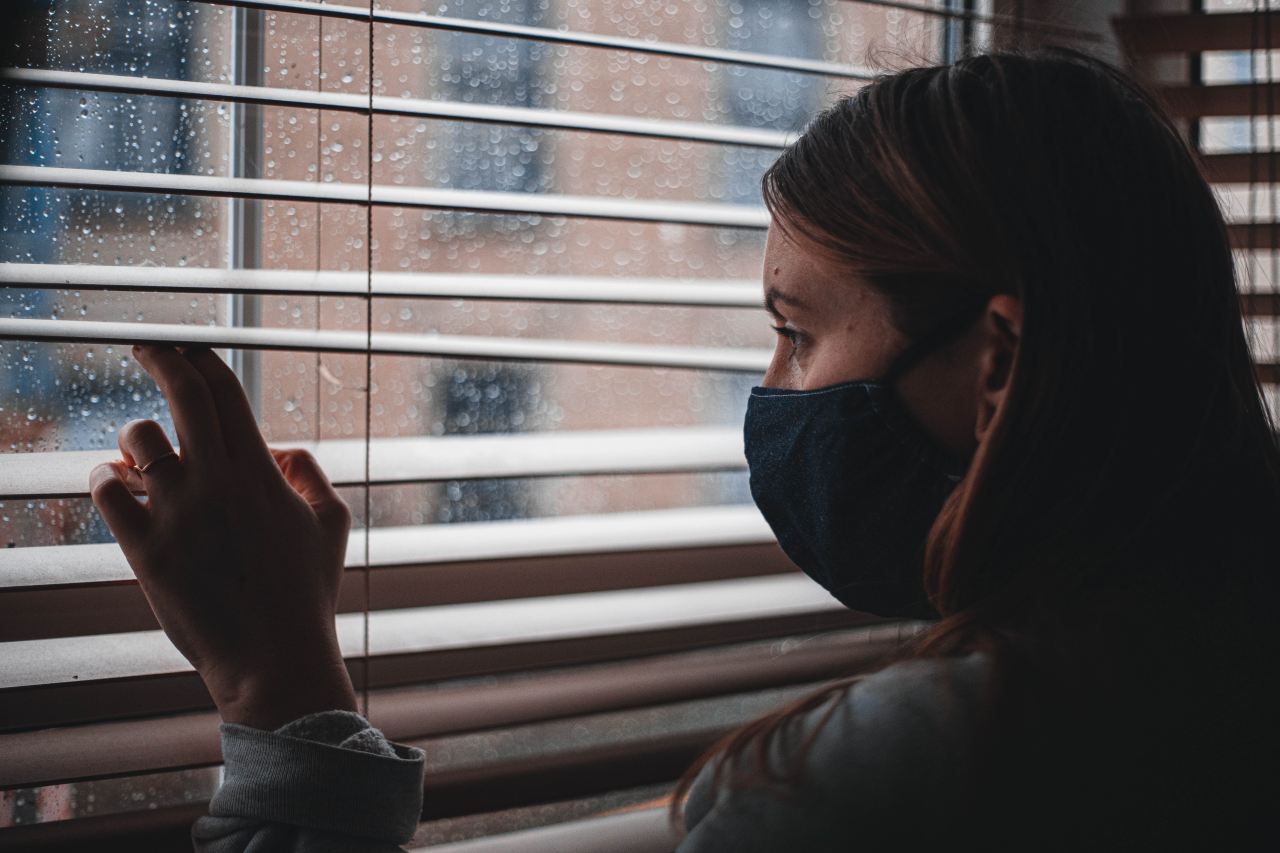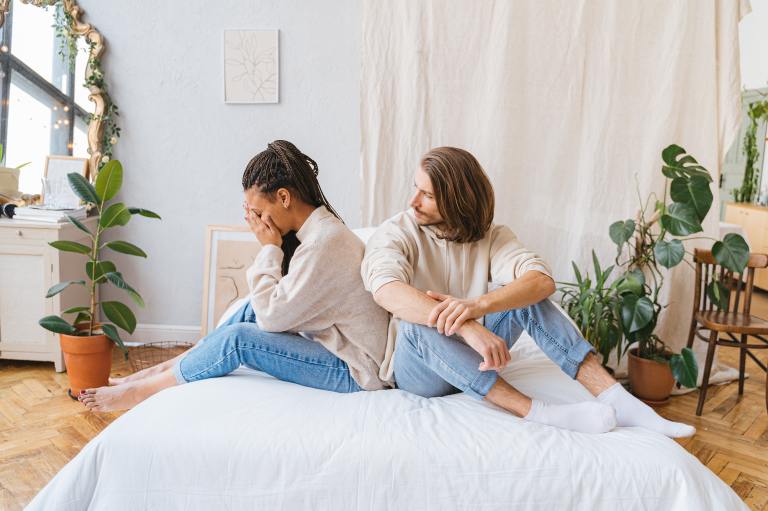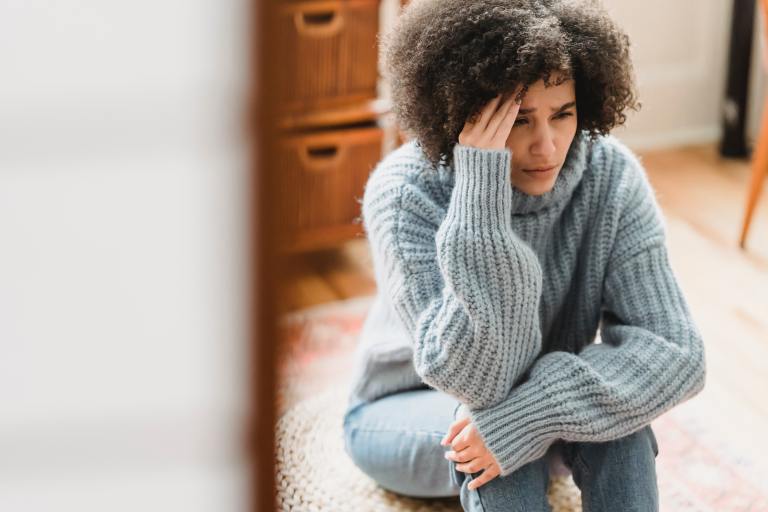How To Become Friends With Your Anxiety
We all have anxiety as part of our human journey, a reminder of our shared humanity.

There’s tension in your head and soreness along your upper back; your body slowly curves inward and your mind races with unkind thoughts. You feel out of control, uncomfortable, and disoriented. You have anxiety.
I’m pretty sure I said something awkward, and I can’t get it out of my head — they must think I’m a psycho. Who the hell am I? Why do I say things like that? Will this ever stop?
I have a lot of anxiety, and it sucks. Sitting with discomfort and uncertainty was not part of my life training. Our emotional pain is real.
Becoming friends with anxiety means slowing down, acknowledging your pain, and listening to your body with self-compassion.
“You can’t stop the waves, but you can learn to surf.”— Jon Kabat-Zinn
We can hear ideas over and over, then one day someone says it a certain way and it clicks. By sharing my anxiety journey — from trying to “fix it” to somatic healing to self-compassion — I hope something clicks.
1. Acknowledging Anxiety
We all have anxiety as part of our human journey, a reminder of our shared humanity.
We have to start by acknowledging and welcoming its presence.
Pushing past anxiety is like telling yourself that it’s not okay to feel or be your whole self: numbing and unhelpful.
We like to push away anxiety with vices. I once drew a cartoon of myself watching TV with a thought bubble, “Haha, I don’t have to deal with my emotions.”
Pushing aside unpleasant emotions does not heal them.
2. Sitting with Anxiety
Most situations are not nearly as bad as we make them out to be. Our stories and judgments cause us pain and anxiety.
Anxiety activates our core emotions and fears, the need for control, survival, and love.
After grounding, we can separate the situation from our response and see the situation more clearly.
Being with your anxiety feels difficult, and we don’t want to start. It feels much more appealing to run to comfort or to try to “fix it.”
I try to logic my way through anxiety — okay, my thoughts are racing. I seem to be feeling unsafe or inadequate. I’ll repeat a mantra, take deep breaths, do meditation or yoga, and it will go away.
We need to combine a logical approach with the felt experience.
Anxiety manifests as trapped energy in our bodies. We need to slow down and release the anxious energy. Easier said than done.
I get frustrated. I’m doing all the right things, so why isn’t this working? Why can’t I be calm already? I’ve been taking deep breaths for a while now.
It takes time and practice to build faith in your ability to feel and heal through anxiety. Our technology culture gives us instant gratification, so we expect everything to happen quickly.
Our bodies function in a slower, more flowing way. Our bodies require more listening, acceptance, and intentional breathing to feel balanced.
3. Listening to Anxiety
Our anxiety alerts us to important information. When we slow down and listen, we can ask ourselves what we need to feel better about the situation.
Talk to the anxious energy in your body: “What more is there for me to know?”
My body often reminds me to slow down and take deeper breaths. I remind myself that I am well-resourced to handle this situation.
I felt anxious about writing this blog. Watching my thoughts, I realized I felt scared of sharing my darkness and feeling not good enough.
By listening to my body, I learned that I need to let myself be vulnerable and embrace the creative process. I can also take steps to make the process more enjoyable and create safety for my artist child.
4. Building Confidence
Anxiety comes from feeling out of control. We feel like a situation, or our emotions, have become unmanageable, and that scares us a lot.
Anxiety is intelligent, blocked energy in our bodies. We can talk to the parts of our bodies where we feel tense, and we can move the blocked energy through our bodies.
My somatic life coach walked me through an exercise: notice the places in your body where you feel tension when you are anxious. Then identify what confidence feels like in your body and where.
With awareness, you can gently move the energy back into a place of confidence.
I learned that my body’s wisdom knows how to handle every situation that I encounter. We need to become very relaxed and present to tap into our inner wisdom.
Using somatic processing, along with a logical approach, has helped me feel more in tune with my body and embrace anxiety.
5. Befriending Anxiety
Anxiety is part of us, and we need to value the ways it helps us. We need to care for our bodies, tell a new story about anxiety, and find strategies.
For many of us, self-compassion does not come naturally.
We grew up in critical, hyper-masculine environments that have made us judgmental of ourselves.
In a self-compassion lecture, Dr. Kristen Neff shared an exercise: Imagine a friend was having a hard time. How would you respond? Then imagine yourself having a hard time. Compare the responses.
Most of us are harsher with ourselves, using a judging tone. We are more willing to be kind and supportive of our friends in their hard times.
By understanding our anxiety, caring for our bodies, and listening to our needs, we can develop self-compassion, making us healthier, more resilient, more likable, and more balanced human beings.




